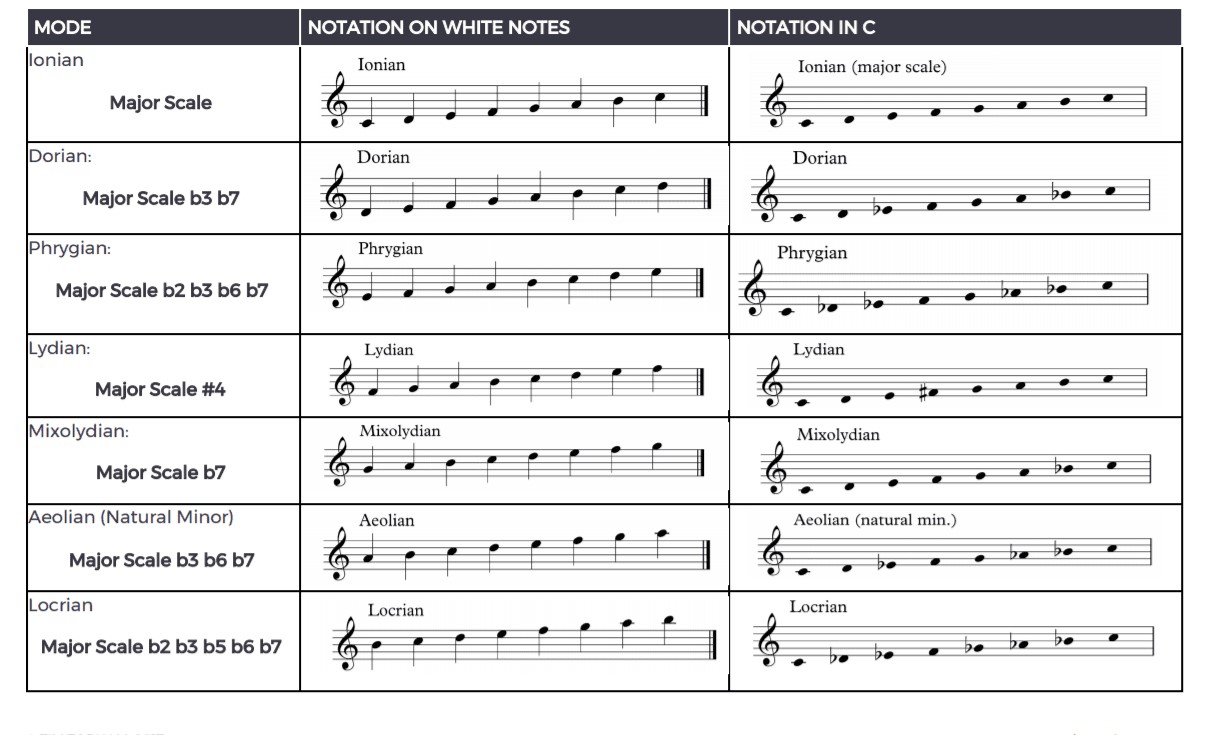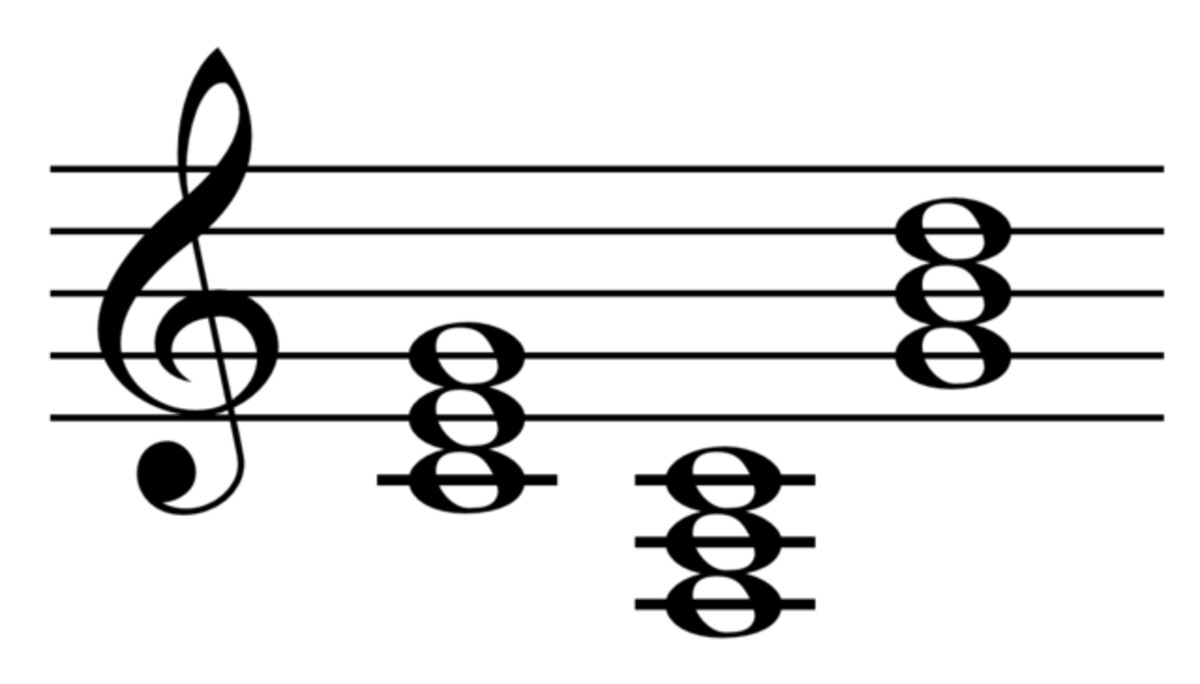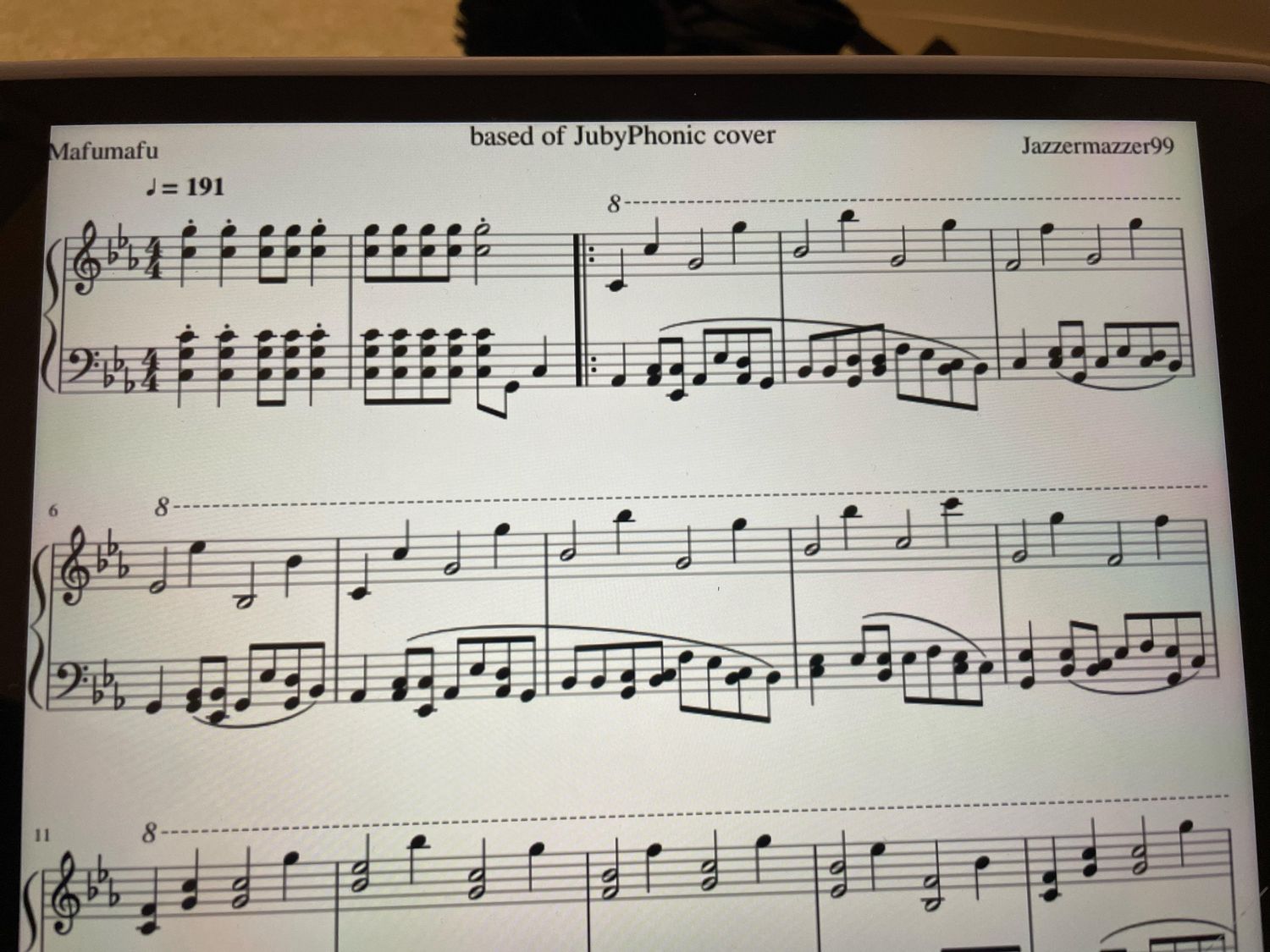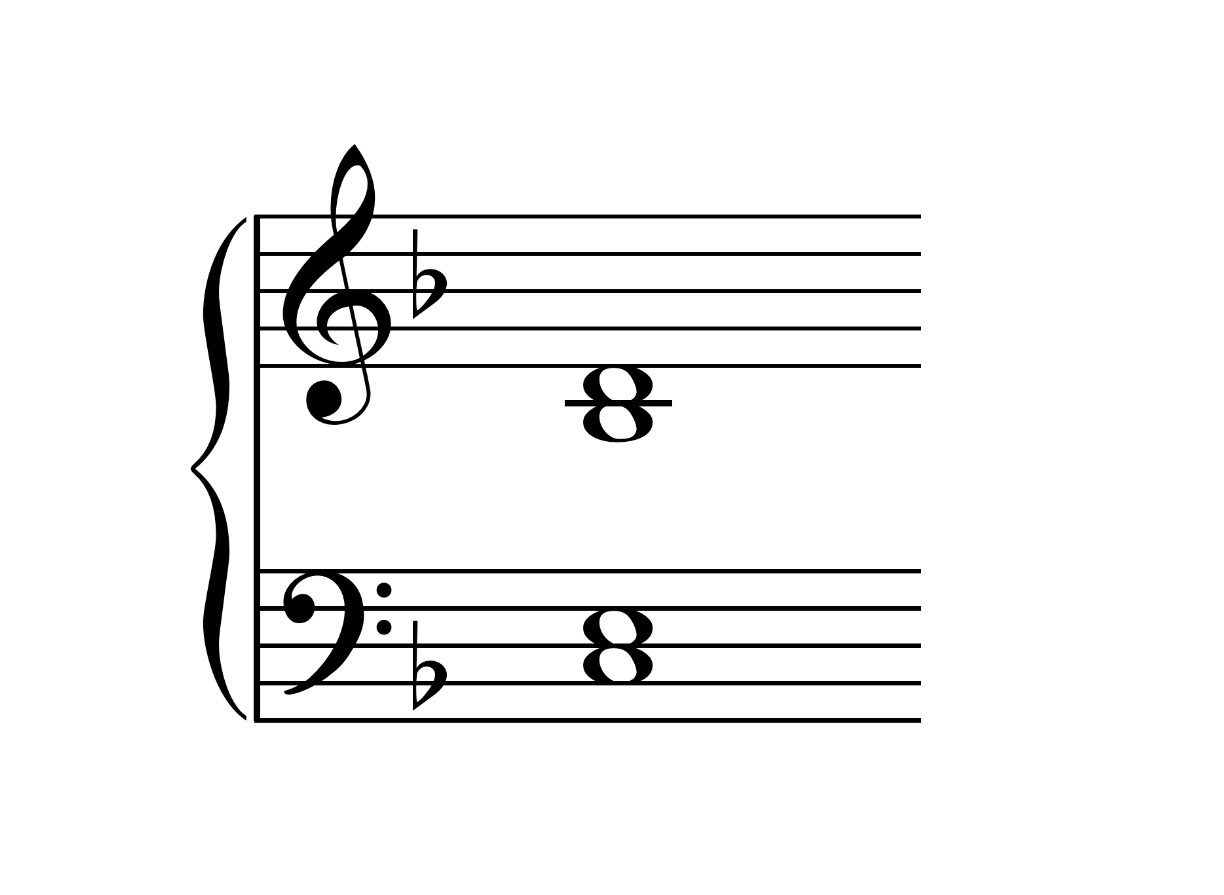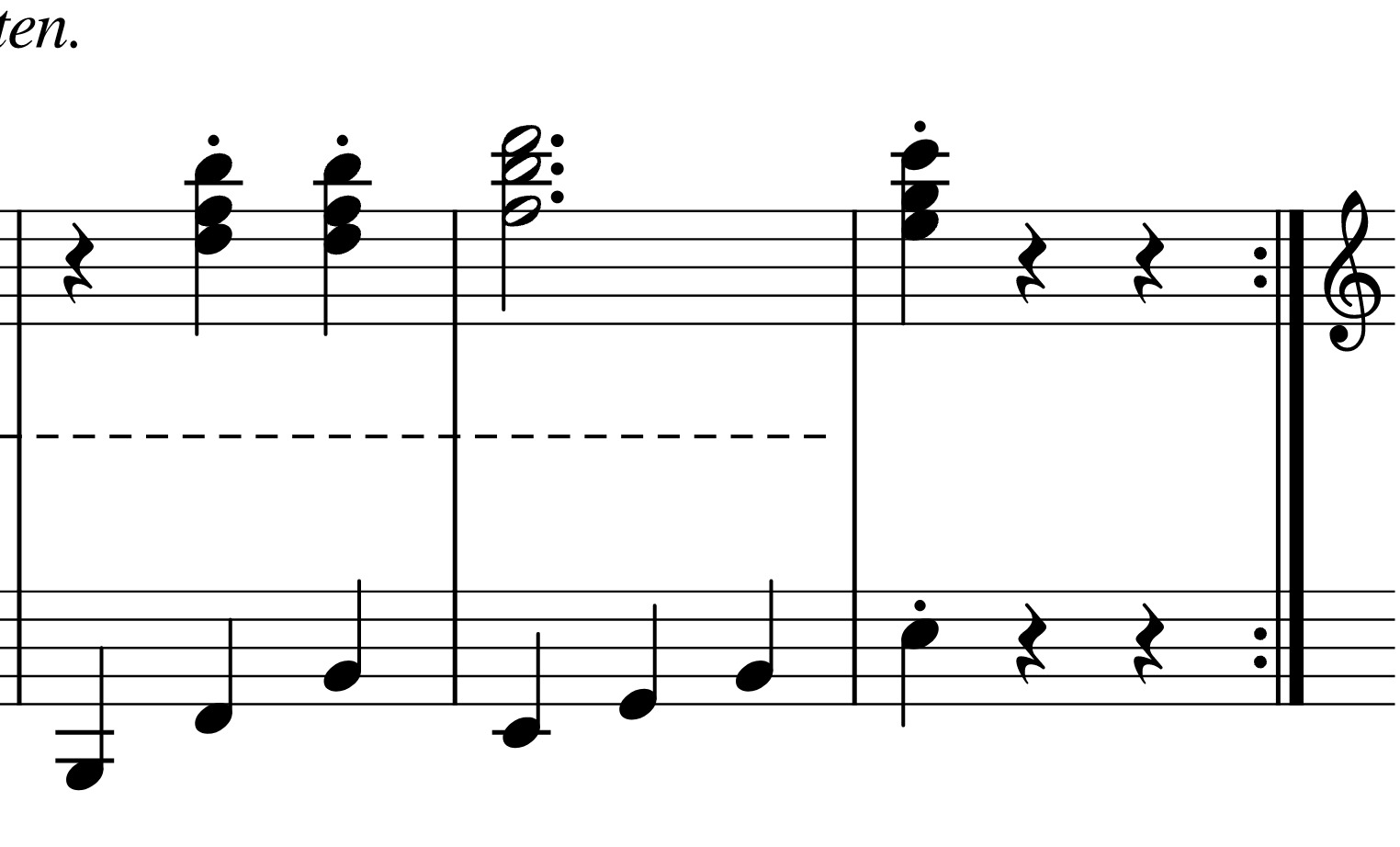Home>Production & Technology>Music Theory>What Is A Dominant In Music Theory


Music Theory
What Is A Dominant In Music Theory
Published: January 31, 2024
Discover the concept of a dominant in music theory and how it influences chord progressions. Explore the intricate dynamics of music theory with a focus on understanding the role of dominants.
(Many of the links in this article redirect to a specific reviewed product. Your purchase of these products through affiliate links helps to generate commission for AudioLover.com, at no extra cost. Learn more)
Table of Contents
Introduction
In music theory, the concept of the “dominant” is fundamental to understanding harmony, chord progressions, and cadences. The dominant is a term that originated from the study of tonal music, which refers to a specific function of a chord within a key or tonality. It plays a vital role in creating tension and resolution, giving music a sense of direction and stability.
Understanding the dominant and its function is crucial for musicians, composers, and music theorists. It allows them to analyze and interpret musical structures, create effective chord progressions, and navigate through different keys and modulations. In this article, we will delve into the world of the dominant and explore its various aspects and applications in music theory.
We will start by defining the dominant in music theory and examining its primary characteristics. Then, we will explore the role of the dominant in chord progressions, including the concept of secondary dominants. We will also discuss the dominant seventh chord and its unique qualities. Furthermore, we will look at how the dominant function is utilized in cadences, which are essential for establishing tonal resolution. Finally, we will touch upon the role of the dominant in modulation, where it serves as a powerful tool for transitioning between different keys.
By the end of this article, you will have a comprehensive understanding of the dominant and its significance in music theory. Whether you are a musician, a composer, or simply an enthusiast, delving into the world of the dominant will enrich your musical knowledge and enhance your ability to appreciate and analyze the complexities of tonal music.
Definition of Dominant in Music Theory
In music theory, the term “dominant” refers to both a specific scale degree and a specific type of chord. As a scale degree, the dominant is the fifth note of the diatonic scale. For example, in the key of C major, the dominant is the note G. This primary use of the term “dominant” comes from its Latin root, dominus, meaning “ruler” or “master.” In tonal music, the dominant has a commanding role and contributes to the overall sense of tonal stability and resolution.
When we speak of the dominant as a chord, we are referring to a major chord built upon the fifth scale degree. In the key of C major, the dominant chord would be a G major chord – G, B, D. This dominant chord is considered consonant and stable, but in the context of harmonic progressions, it has a strong tendency to resolve to the tonic chord (the first scale degree chord, in this case, C major).
The dominant is characterized by its strong pull or tension towards the tonic through the use of specific interval relationships. The most prominent interval within the dominant chord is the tritone – the interval between the third and seventh notes of the chord. In the G major chord mentioned earlier, the tritone is formed by the notes B and F. The tritone is highly dissonant and creates tension that seeks resolution.
It is important to note that the term “dominant” is not exclusive to major keys. In minor keys, the dominant scale degree and chord are altered to fit the natural minor scale’s characteristics. In the key of A minor, for example, the dominant scale degree is E and the dominant chord is E major.
Overall, the dominant plays a crucial role in establishing tonality and creating tension and resolution in music. It sets the stage for harmonic progressions and serves as a foundation for understanding chord functions and cadences. To truly comprehend the complexities of music theory, a solid understanding of the dominant is essential.
The Role of the Dominant
The dominant chord and its corresponding scale degree play a significant role in tonal music, providing a sense of tension and direction that is resolved by the tonic. The primary role of the dominant is to create a strong pull towards the tonic chord, establishing a sense of tonal stability and resolution. Let’s explore the various aspects of the dominant’s role in music.
First and foremost, the dominant acts as a musical anchor, providing a stable reference point in a chord progression. It serves as a bridge between different chords and keys, guiding the listener’s ear towards the tonal center. In essence, the dominant prepares and leads to the resolution to the tonic chord, creating a satisfying musical journey for the listener.
Additionally, the dominant chord often serves as the climax of a phrase or musical section. Its inherent tension demands resolution, making it a powerful tool for creating emotional impact and musical tension. The transition from the dominant to the tonic chord can evoke a sense of resolution, closure, or completion.
Furthermore, the dominant can also be used to create harmonic variety and interest. By incorporating different chords within the dominant function, such as dominant seventh chords or altered dominants, composers can add color and complexity to their compositions. These variations of the dominant chord introduce additional tension and create unique harmonic possibilities.
Another important aspect of the dominant’s role is its contribution to melodic and harmonic motion. When moving from the dominant to the tonic, the melodic line often follows a descending pattern, contributing to a sense of resolution and stability. Harmonically, the dominant typically moves to the tonic chord in a perfect authentic cadence, a strong resolution that reinforces the tonal hierarchy.
Lastly, the dominant can also be used creatively to enhance compositional techniques such as modulation and key changes. By emphasizing the dominant chord of a new key, composers can smoothly transition from one tonal center to another, creating a sense of contrast and exploration.
Overall, the dominant’s role in music is multifaceted. It establishes tonal stability, creates tension and resolution, adds color to harmonies, and contributes to melodic and harmonic motion. Understanding and harnessing the power of the dominant allows composers and musicians to effectively manipulate musical tension and guide the listener through a captivating musical journey.
Dominant Function in Chord Progressions
The dominant function plays a crucial role in creating tension and resolution within chord progressions. It is responsible for guiding the listener’s ear and establishing tonal stability. Understanding the dominant function is key to building compelling and harmonically engaging compositions. Let’s explore how the dominant function is utilized in chord progressions.
One of the primary ways the dominant function is used is through the dominant to tonic progression. This progression involves moving from the dominant chord to the tonic chord, creating a sense of resolution and closure. In the key of C major, for example, the dominant chord (G major) progresses to the tonic chord (C major). This progression is commonly used to conclude musical phrases or sections, providing a strong sense of finality.
Additionally, the dominant function can be expanded through the use of secondary dominants. A secondary dominant is a dominant chord that is not the primary dominant of the key but is temporarily borrowed from another key. It adds color and variety to chord progressions by introducing new tonalities within a piece. For example, in the key of C major, a secondary dominant could be the dominant of the key of G major (D major). This secondary dominant can then resolve to the dominant chord of G major, creating a sense of harmonic tension and resolution.
Another common technique is the use of the dominant chord as a pivot chord. In this scenario, the dominant chord is used to smoothly transition between different keys. By emphasizing the dominant chord of the new key, the listener is subtly guided towards the new tonal center. This pivot technique is frequently employed in modulations and key changes, adding complexity and interest to the harmonic progression.
Furthermore, the dominant function can be extended through the use of dominant seventh chords. A dominant seventh chord adds an extra layer of tension and richness to the dominant function, further intensifying the resolution to the tonic. In a C major key, for instance, the dominant seventh chord would be a G dominant seventh (G7) – G, B, D, F. This chord is often used as a transitional chord or as a passing chord, leading to the resolution to the tonic chord.
Overall, the dominant function in chord progressions is essential for creating harmonic tension and resolution. Through the use of the dominant to tonic progression, secondary dominants, pivot chords, and dominant seventh chords, composers can craft engaging and dynamic compositions. Understanding the role of the dominant function and its various applications empowers musicians to navigate through different tonalities and create captivating musical journeys.
Secondary Dominants
In music theory, secondary dominants are a powerful tool for adding harmonic color and variety to chord progressions. They introduce temporary tonalities within a piece by borrowing dominant chords from other keys. Understanding secondary dominants opens up a world of harmonic possibilities and can greatly enhance the richness and complexity of a composition.
Secondary dominants are chords that function as dominants to a chord other than the tonic. They are often used to intensify the resolution to a target chord, creating a sense of tension and release. For example, in the key of C major, the dominant chord is G major. However, if we were to introduce a secondary dominant, such as the dominant of the key of D major (A major), we would have an A major chord leading to the D major chord.
The use of secondary dominants can be found in various musical genres, from classical to jazz to pop. They can be applied to both major and minor keys, providing a harmonic twist to the traditional chord progressions. By introducing secondary dominants, composers can create unexpected chord motions and add complexity to their compositions.
To properly use secondary dominants, it is important to identify the target chord and its corresponding dominant. The secondary dominant should be a major chord built on the dominant scale degree of the target chord’s key. For example, in the key of C major, if the target chord is the D minor chord, the secondary dominant would be an A major chord. The A major chord, as a dominant to D minor, adds tension and prepares the listener for the resolution to the D minor chord.
When incorporating secondary dominants into chord progressions, it is common to include a tonicization or temporary modulation to the key of the target chord. This gives the secondary dominant and target chord a more pronounced effect by briefly shifting the tonal center. As a result, secondary dominants can create exciting moments of harmonic tension and resolution, capturing the listener’s attention and adding a twist to the overall musical journey.
Furthermore, secondary dominants can be used in combination with other harmonic techniques, such as modulation, chord substitutions, and chromaticism. They provide a means to explore different tonalities and create unique chord progressions that break away from traditional diatonic patterns.
Overall, secondary dominants are a valuable tool for composers and musicians seeking to add complexity and harmonic interest to their compositions. By borrowing dominant chords from other keys, they expand the tonal palette and create tension and resolution within chord progressions. Understanding the concept and application of secondary dominants allows for greater musical expression and creativity.
Dominant Seventh Chords
Dominant seventh chords are an essential component of music theory, adding richness and complexity to harmonic progressions. They are formed by adding a minor seventh interval to the dominant triad, creating a distinct sound and increased tension. Dominant seventh chords play a significant role in tonal music, providing a strong pull towards resolution and adding color to chord progressions.
A dominant seventh chord consists of four notes – the root, major third, perfect fifth, and minor seventh. For example, in the key of C major, the dominant seventh chord would be a G dominant seventh chord (G7) – G, B, D, F. The addition of the minor seventh interval (the note F in this case) introduces dissonance and creates a strong desire for resolution to the tonic.
Dominant seventh chords are commonly found in various musical genres, including jazz, blues, and classical music. They are known for their dominant function, leading to the resolution to the tonic chord and establishing a strong sense of tonal stability. In a typical cadential progression, the dominant seventh chord resolves to the tonic chord, creating a satisfying and conclusive ending.
One of the defining characteristics of dominant seventh chords is their versatility and potential for harmonic exploration. They can be used to substitute for other dominant chords within a progression, adding a unique flavor and harmonic interest. For example, in a song in the key of C major, instead of using a simple G major chord as the dominant, a G7 chord can be used to provide a more tension-filled and interesting sound.
Dominant seventh chords can also be used to create chromaticism and chromatic resolutions. By altering one or more of the chord tones, composers can introduce new harmonic possibilities and create unexpected chord progressions. These chromatic resolutions add color and tension to the music, captivating the listener’s ear.
Additionally, dominant seventh chords can serve as passing chords or transitional chords between two stable chords. They provide a smooth and satisfying movement, adding a sense of motion and fluidity to the music. By incorporating dominant seventh chords strategically within a progression, composers can create captivating harmonic journeys that engage the listener.
Overall, dominant seventh chords are indispensable tools in music theory, offering a wide range of harmonic possibilities and enriching chord progressions. Whether used as a dominant function or for chromaticism and substitution, their distinct sound and tension-driven nature bring depth and excitement to compositions. Understanding and harnessing the power of dominant seventh chords allows musicians to create captivating and harmonically engaging music.
Dominant Function in Cadences
The dominant function plays a crucial role in creating cadences, which are musical phrases or progressions that provide a sense of resolution and closure. Cadences are a fundamental aspect of tonal music, and the dominant function is key to establishing a strong cadential resolution. Understanding the role of the dominant in cadences allows composers and musicians to create harmonically satisfying endings and shape the overall musical structure.
One of the most common cadences featuring the dominant function is the perfect authentic cadence (PAC). In a PAC, the dominant chord progresses to the tonic chord, creating a strong sense of resolution. For example, in the key of C major, a PAC would typically involve the G dominant chord resolving to the C major chord. This cadence has a final and conclusive feel, providing a sense of stability and rest.
The dominant function in cadences extends beyond the perfect authentic cadence. It is also present in other types of cadences, such as the plagal cadence, deceptive cadence, and half cadence. In each of these cadence types, the dominant chord plays a specific role in creating tension and leading to a resolution, albeit with different harmonic characteristics.
A plagal cadence, often referred to as the “amen cadence,” involves the progression from the subdominant chord to the tonic chord. However, the dominant function can be present in the form of a passing motion, where the dominant chord briefly appears before resolving to the tonic. This passing dominant adds a subtle touch of tension and leads the listener to the final resolution.
A deceptive cadence, on the other hand, creates a sense of surprise or suspension by diverting from the expected resolution. Instead of resolving to the tonic chord, the dominant chord unexpectedly progresses to a chord other than the tonic. This unexpected shift adds a moment of tension and novelty to the cadence, keeping the listener engaged and intrigued.
Furthermore, the half cadence, also known as the “interrupted cadence,” involves the progression from any chord to the dominant chord. The dominant function in this cadence creates a moment of anticipation and expectation for the tonic resolution that follows afterward. It is a temporary pause in the musical narrative, building tension and leaving the listener eager for the final resolution.
By utilizing the dominant function in cadences, composers tap into the natural harmonic tendencies of tonal music. The dominant chord’s inherent tension and resolution serve as a powerful tool for guiding the listener and shaping the emotional impact of a musical phrase or section. Whether it is through a perfect authentic cadence, a plagal cadence, a deceptive cadence, or a half cadence, the dominant function provides a pathway to satisfying resolutions and captivating musical experiences.
Dominant Function in Modulation
The dominant function plays a vital role in modulation, which is the process of transitioning from one key to another within a musical composition. Modulation allows composers to explore new tonalities, create contrast, and add interest to their music. The dominant chord serves as a powerful tool in facilitating smooth and effective modulations by reinforcing the sense of tonal movement and resolution.
When modulating to a new key, the dominant chord of the new key is often emphasized. By highlighting the dominant chord, composers establish a clear tonal center and prepare the listener for the shift in key. The dominant chord creates a natural tension that begs for resolution, making it an ideal choice for signaling a key change.
One common modulation technique involving the dominant chord is the use of pivot chords. Pivot chords are chords that exist in both the original and new key, acting as a bridge between the two tonalities. The dominant chord of the original key can serve as a pivot chord, leading smoothly into the dominant chord of the new key. This pivot technique helps create a seamless transition and reinforces the tonal relationship between the two keys.
Additionally, dominant seventh chords can be employed to facilitate modulations. The dominant seventh chord is naturally tension-filled due to the inclusion of the minor seventh interval. A dominant seventh chord in the original key can provide a powerful resolution when it progresses to the dominant seventh chord in the new key. This movement creates a strong sense of forward motion and establishes the new tonal center.
Furthermore, secondary dominants can play a role in modulation. As mentioned earlier, secondary dominants are dominant chords borrowed from other keys. By introducing a secondary dominant to the new key, composers can create a temporary sense of tonal instability and prepare for the modulation. The secondary dominant establishes a new dominant-tonic relationship, leading the listener into the new key.
Overall, the dominant chord’s function in modulation is to provide a sense of tension and resolution, guiding the listener through key changes and creating a smooth transition. Whether through the use of pivot chords, dominant seventh chords, or secondary dominants, composers harness the power of the dominant function to explore new tonalities, enhance musical journeys, and captivate listeners with their harmonic ingenuity.
Conclusion
Understanding the concept of the dominant and its various functions in music theory is essential for musicians, composers, and music enthusiasts alike. The dominant plays a pivotal role in creating tension, establishing tonal stability, and providing resolution within chord progressions, cadences, modulations, and more.
Through the dominant’s commanding presence, composers can guide the listener’s ear, evoke emotional responses, and shape the overall structure of a musical composition. Whether it is through the dominant to tonic resolution in a perfect authentic cadence, the use of secondary dominants to introduce temporary tonalities, or the incorporation of dominant seventh chords to add complexity and color, the dominant serves as a powerful tool for crafting harmonically engaging music.
The versatility of the dominant allows for endless creative possibilities. Composers can utilize the dominant to drive forward motion, establish tonal centers, create tension, and achieve resolution. The use of dominant chords and functions adds depth, interest, and emotion to musical compositions, enhancing the overall listening experience.
As a musician or composer, understanding how to effectively use the dominant in your compositions can significantly impact the quality and impact of your music. By harnessing the power of the dominant, you can create captivating harmonies, explore new tonalities, and captivate your audience with tension and resolution.
In conclusion, the dominant is a cornerstone of music theory, representing a fundamental component of harmony and tonality. Its function and characteristics are essential to creating engaging and expressive music. By mastering the knowledge of the dominant, you will elevate your musical compositions, captivate your listeners, and deepen your appreciation of the intricate world of music theory.

